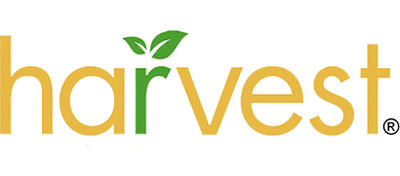Our Big Picture
Our mission to provide our customers with a safe and healthy product is only the beginning. At Harvest Green Mattress, we already know our customers are environmentally mindful. We hope to inspire other businesses and individuals to support environmental solutions.
As a green business, we manufacture with the intent of a minimal carbon footprint. By working together synergistically, our impact is greater than the sum of our parts.
The Harvest Green Mattress brand is rooted in our love and care for mother earth, but she is suffering. We are a business dedicated to effecting positive change to help her. All our mattresses are made with renewable resources that are environmentally friendly and biodegradable materials. Our beds are chemical-free, helping to live cleaner, healthier lives by reducing chemical exposure.
But reducing and recycling is not enough; we want to give back. One way we want to be more productive is to bring back the pollinators. Many of our most important pollinator species are being threatened by increasing chemical exposure, and their natural habitats are being devastated globally. Restoring our pollinators doesn’t have to be daunting, especially if we work cooperatively.
Encouragement
Environmental giving is a start. We like to encourage restoration beyond our manufacturing by giving our already proactive consumers a special gift. Your instruction insert for unboxing will come with embedded pollinator-friendly flower seeds.
The seeds are carefully selected to grow in as many regions as our mattresses are delivered to. So, when you open your box, the paper will be ready for planting in the warm seasons near you.
Did you know the honeybee makes one of every three meals we consume possible by the honeybee?
Bees are so crucial for plant life that if a plant has produced a flower, you know a bee helped pollinate it. 70% of all fruits, vegetables, nuts, and seeds we consume daily come from the work of bees. That represents almost 200 billion dollars of global agricultural revenue. If all the honeybees were to die out, our plant life would quickly follow. Plants used to feed livestock would be limited shortly after that, restricting our dairy and meat supplies. Millions of bee populations have declined significantly over the years. In 1995, there were an estimated 5 million honeybees; by 2015, nearly half were estimated at 2.5 million remaining.
What's Happening?
What’s causing this? There is a phenomenon called colony collapse disorder where since 200, an average of 1/3 of colony bee populations are abandoning their hives. We know bees have several factors working against their survival. In some colonies, mites, viruses, and parasites have been a factor, but it is thought these invaders are impacting bees more due to toxins weakening their fragile systems.
It's No Surprise
Their rapid decline over the past few decades coincides with the parallel introductions of newer insecticides, such as neonicotinoids, that are deadly to bees. These chemicals cause confusion and disorientation, resulting in bees abandoning their hives. Other contributors include crop uniformity, monocultures, human activity stress, and other pollutants that have caused bee declines. If the populations of bees continue to decline, we face entire food chains and webs being destroyed… the results would be catastrophic. We have a responsibility to take care of our surroundings, not just for the beauty of nature but to be stewards of our planet.
In addition to our seed paper, there is more you can do! Please follow these steps to help make an even bigger difference!
· Don't spray pesticides. Pesticides are a significant culprit in Colony Collapse Disorder, it's terrible for them and you!
· Support local organic farmers who use natural farming methods that are bee-friendly.
· Plant a bee-friendly habitat every year! Even just a few flowering plants can make a difference.
· Sponsor a hive. There are organizations nationwide, but starting at your local level is a great place to begin!
HEY BUD HOW'S IT GROWING?
If you choose to plant your free embedded pollinator-friendly instruction, insert. We encourage you to share your growing pollinator-friendly flowers on our website! Please email us your inspiring pictures reminding us we are in this together.




